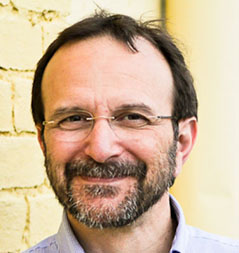TWiM investigates the high variability in the rate and amount of current production from microbial fuel cells, and how bacteria link their growth rate to external nutrient conditions via a protein that functions as a cellular rheostat.
TWiM reveals environmental integrons, bacterial genetic elements notorious for their role in spreading antibiotic resistance, and how Salmonella invasion is controlled by competition among intestinal chemical signals.
The TWiM team reviews Salmonella colonization of three-dimensional miniature intestinal organs, and identification of a circadian clock in a non-photosynthetic prokaryote.
From Indiana University, Vincent speaks with Ankur, Julia, and Xindan about their careers and their work on horizontal gene transfer, quorum sensing, and chromosome organization in bacteria.
Vincent, Michael, and Michele explain the use of an electrochemical gradient to eliminate bacterial biofilms, and how phage susceptibility can be transferred by exchange of receptor proteins.
Vincent, Elio and Michele wind up a year of microbial podcasts with a story about the lack of resistance to a crop antifungal compound, and how a bacterium uses a molecular caliper to measure membrane thickness.
Vincent, Elio, Michael, and Michelle discuss a symbiosis between a bacterium and fungus that increases the virulence of oral biofilms, and the assembly of amyloid fibers, which are needed for biofilm formation.
Vincent, Michael, and Elio meet up with Jonathan Dworkin to discuss how bacteria form spores and how they return to vegetative growth.


